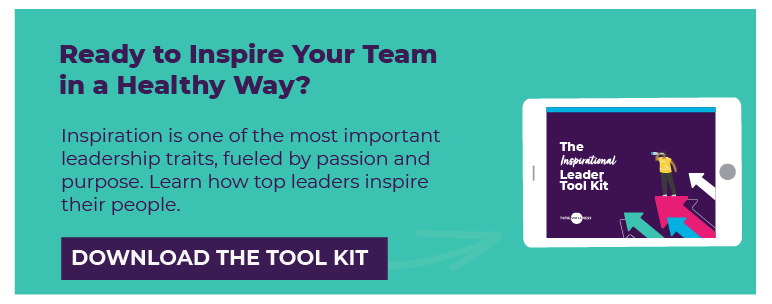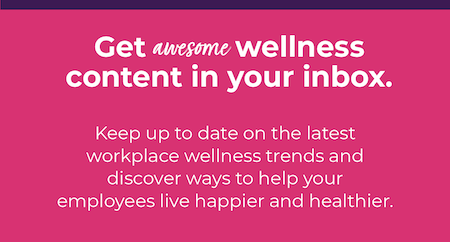 It’s no secret that employee wellness is more important than ever.
It’s no secret that employee wellness is more important than ever.
Healthcare costs are out of control, chronic diseases are stacking up like a bad game of Jenga, and mental health? Yeah, let’s just say people are struggling.
A new survey from Emory University and Gallup basically confirmed what we already knew — people are worried about healthcare access, chronic disease, food and water safety, and the general state of the world. Fun times!
Now, you might be thinking, Okay, but isn’t this a government problem? Sure, but guess what? Employers (that’s you) have a huge opportunity to step up. And no, that doesn’t mean throwing a fruit basket in the breakroom and calling it a wellness initiative. It means stepping up in ways that actually make employees’ lives better.
Let’s break it down.
The Health Problems No One Can Ignore
A recent Rollins-Gallup Public Health Priorities Survey asked over 2,100 adults across the U.S. about their biggest health worries, how things have changed in the last decade, and who should take the lead in fixing these challenges — federal or state government. The results? People are craving better healthcare access, more support for managing chronic diseases, and stronger safety nets. And guess what? These are all issues that affect employees every single day.
Here’s what the survey found:
- Healthcare access is the #1 concern. One in four people said it’s their biggest worry, and over half ranked it in their top three. Translation: People are tired of endless hurdles just to see a doctor.
- Chronic diseases are on the rise. Heart disease, diabetes, and obesity aren’t just affecting older adults. They’re creeping into younger generations too.
- Food and water safety is a bigger deal than most people realize. It’s not just about avoiding food poisoning — safe, high-quality nutrition and clean water impact overall health.
- People trust doctors and nurses, but social media is playing a growing role in health decisions. Younger employees are turning to social media for health advice. Sometimes that’s good, but misinformation is a real risk.
- Most people think the government should step in. But that doesn’t mean businesses can’t help. While we wait for policy changes (which, let’s be honest, could take forever), you’ve got the power to improve things right now. While public policy plays a big role, employers also have the power to make a difference.
So, what’s the move? Let’s talk about what you can actually do to make the workplace a healthier place to be.
How Employers Can Take Action
Although there are many areas beyond your control, you can transform the workplace into an environment that genuinely supports employees' health. Here’s how:
1. Make Healthcare Less of a Nightmare
People are tired of healthcare being a scavenger hunt. Make it easy for them. Some ways to improve access include:
- Offer telehealth services so employees don’t have to rearrange their lives for a 10-minute doctor visit.
- Bring in on-site or nearby clinics for basic checkups, flu shots, and screenings.
- Cover preventive care (because trust me, paying for a flu shot is way cheaper than dealing with an office-wide outbreak).
- Explain benefits in plain English. If your employees don’t know how to use their health plan, it’s useless. Give them a cheat sheet, a hotline, a puppet show — whatever works.
2. Stop Chronic Disease Before It Starts
Chronic illnesses don’t show up overnight. They creep in slowly — thanks to stress, bad eating habits, and the sit-all-day-and-stare-at-a-screen lifestyle. Help employees fight back:
- Stock the office with real food. Sorry, but a vending machine full of Funyuns isn’t wellness. Give people actual healthy options.
- Set up movement challenges. Encourage walking meetings, standing desks, or even just “get up and move” reminders.
- Make screenings easy. Want employees to care about their health? Give them biometric screenings so they knowwhat’s up.
- Throw in gym perks. Discounts, reimbursements, free classes. Whatever gets people moving
You want fewer sick days and lower healthcare costs? Help people stay healthy in the first place.
3. Actually Care About Mental Health
Half of Americans believe we’ve lost ground on mental health over the past decade. The stigma might be fading, but getting actual help is still a struggle.
- Cover therapy (or at least make it affordable).
- Be flexible — remote work, mental health days, realistic workloads.
- Create actual chill zones. No one is “relaxing” in a conference room. Give people a space that actually helps them reset.
- Talk about stress, burnout, and anxiety like they’re real things (because they are).
Happy brains = better work, better retention, and fewer people rage-quitting via Slack.
4. Give Employees Info They Can Actually Use
People are drowning in misinformation. And no, drinking celery juice will not cure everything. People need real health info, not TikTok pseudoscience. Employers can help employees access reliable health education by:
- Bring in legit health experts — dietitians, doctors, mental health pros — to bust myths and give real advice.
- Send out health tips that don’t suck. Quick, useful, not boring. (No one wants a five-page PDF on “healthy habits.”)
- Put up posters with actual facts. Keep it simple, clear, and maybe even funny.
Misinformation is everywhere. Your job? Help employees filter out the nonsense.
5. Make Workspaces Less Germy & Gross
Look, no one likes working in a petri dish. Keeping employees healthy starts with making the workplace less disgusting.
- Providing clean, filtered drinking water to promote hydration.
- Offering ergonomic workstations to prevent pain and injuries.
- Ensuring proper air quality and ventilation in office spaces.
Simple adjustments to the work environment can make a significant impact on employee health and productivity.
6. Get Involved in Public Health Efforts
You’re not the CDC, but you can do things that help keep your team (and community) healthier.
- Offering onsite flu and COVID-19 vaccination clinics to reduce the spread of illness.
- Partnering with health organizations to provide screenings and wellness services.
- Encourage employees to join community health events. Walks, runs, fundraisers. Get them involved.
The more you invest in public health, the better your workplace (and reputation) will be.
Addressing America’s Top Health Concerns
People want jobs that support their health, not ones that slowly drain the life out of them. If you:- Make healthcare access easy
- Help prevent chronic diseases
- Support mental health like it actually matters
- Share real health info
- Keep the workplace safe & not disgusting
- Align with public health efforts
...your employees will be healthier, happier, and way less likely to quit.
And guess what? That benefits you, too — less absenteeism, higher engagement, lower healthcare costs, and a team that actually likes working for you.
Wellness at work isn’t just a perk. It’s a business strategy that drives long-term success. What steps will your company take to support employee health this year?
Drop a comment below and let’s talk — what’s the biggest wellness challenge at your workplace right now?



